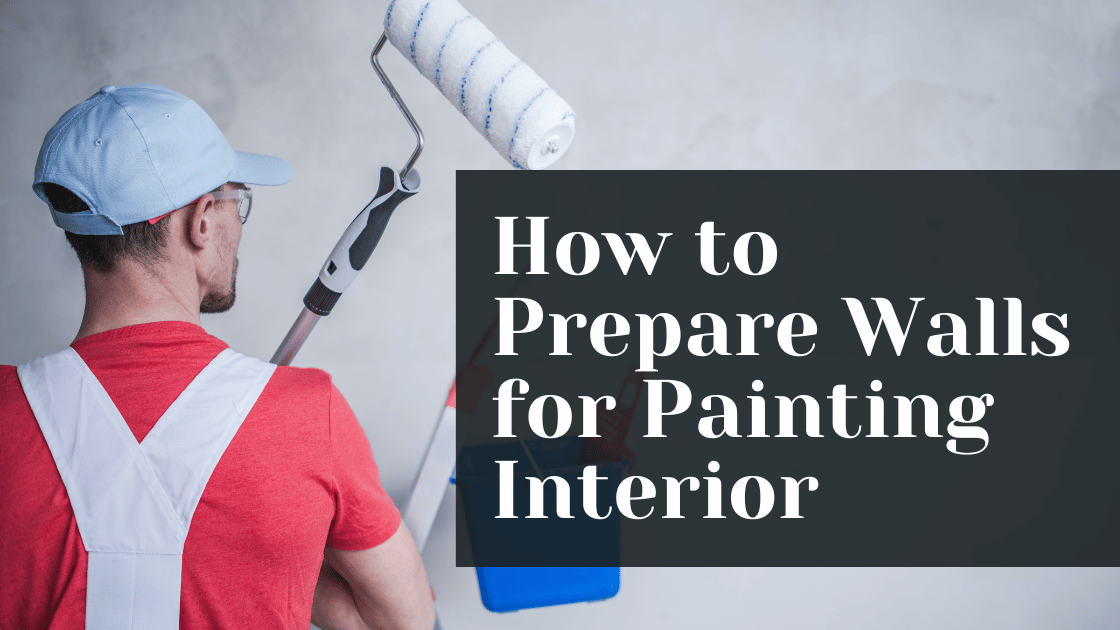
Painting your home’s interior walls can transform your living space, giving it a fresh and vibrant look. But before you can start applying those beautiful new colors, you need to prepare your walls properly. Skipping this crucial step can lead to uneven finishes, peeling paint, and a whole host of other issues. Let’s dive into the step-by-step process of preparing your walls for painting to ensure a flawless finish.
Gathering Necessary Materials
Before you begin, gather all the materials you’ll need. This includes basic supplies like sandpaper, spackle, a putty knife, primer, painter’s tape, drop cloths, and cleaning supplies. Don’t forget safety gear such as gloves, safety glasses, and a dust mask to protect yourself during the preparation process.
Assessing the Wall Condition
Start by assessing the condition of your walls. Identify the type of walls you have – drywall, plaster, or paneling. Look for any damage such as cracks, holes, or peeling paint. This initial inspection will help you determine the extent of repairs needed.
Cleaning the Walls
Cleaning the walls is an essential step. Use a vacuum or a dry cloth to remove dust and cobwebs. For greasy or grimy areas, especially in kitchens, use a mild detergent mixed with water. Ensure the walls are completely dry before moving on to the next step.
Repairing Wall Imperfections
Next, tackle any imperfections. Fill holes and cracks with spackle using a putty knife. Allow the spackle to dry completely, then sand it smooth. For larger holes, you might need to use a patching kit. Smooth out any rough surfaces to ensure an even paint application.
Sanding the Walls
Sanding is crucial for creating a smooth surface. Choose the right sandpaper grit – typically, 120 to 150 grit works well for walls. Sand lightly to remove any rough spots, old paint drips, or uneven areas. Wipe down the walls with a damp cloth afterward to remove any dust.
Dealing with Mold and Mildew
Mold and mildew can cause serious problems if not addressed. Identify any moldy areas – they often appear as black or greenish spots. Use a mixture of water and bleach to clean these areas, but be sure to wear protective gear and ensure good ventilation. If the mold is extensive, consider hiring a professional.
Priming the Walls
Priming is a step you should never skip. Primer helps paint adhere better and provides a uniform surface for painting. Choose a primer suitable for your wall type and apply it evenly. Allow the primer to dry completely before painting.
Protecting Adjacent Surfaces
Protect your floors, furniture, and adjacent surfaces by using painter’s tape and drop cloths. Cover baseboards, window frames, and door frames with tape to prevent accidental paint splatters. Move or cover furniture to avoid damage.
Handling Stubborn Stains
Some stains are tougher to deal with, like water stains, smoke stains, or marker scribbles. Use a stain-blocking primer to cover these spots before painting. For water stains, make sure the underlying issue (like a leak) is resolved first.
Addressing Special Wall Types
Different wall types require different approaches. For textured walls, ensure all nooks and crannies are clean and any protruding bits are smoothed out. For paneling, sanding and priming are key. If dealing with wallpapered walls, remove the wallpaper entirely and clean the adhesive residue thoroughly.
Final Inspection
Once you’ve completed the above steps, conduct a final inspection. Look for any missed spots, remaining flaws, or areas that need additional sanding or patching. This is your last chance to fix imperfections before painting.
Setting Up a Painting Area
Organize your tools and set up a clean, efficient work area. Arrange your brushes, rollers, paint trays, and ladders so everything is within easy reach. Having a well-organized space can make the painting process smoother and more enjoyable.
Tips for Best Results
To achieve professional-looking results, avoid common mistakes like skipping primer, using the wrong type of paint, or not allowing enough drying time between coats. Take your time, follow each step carefully, and don’t rush the process. Remember, patience and preparation are key to a stunning finish.
Interior Painting in Philadelphia: Pinnacle Painters
When it comes to interior painting in Philadelphia, Pinnacle Painters stands out as the premier choice for homeowners seeking quality and reliability. With years of experience and a dedicated team of skilled professionals, Pinnacle Painters has built a reputation for delivering exceptional results that transform living spaces. Their commitment to using top-grade materials and advanced techniques ensures a flawless finish every time. Whether you’re looking to refresh a single room or undertake a comprehensive home makeover, Pinnacle Painters offers customized solutions tailored to your specific needs. From the initial consultation to the final brushstroke, their focus on customer satisfaction and attention to detail make them the go-to experts for all your interior painting projects in Philadelphia.
Conclusion
Preparing your walls for painting is a critical step that can make or break your project. By following these detailed steps, you can ensure a smooth, flawless surface that’s ready for your chosen paint color. Whether you’re a seasoned DIYer or a newbie, taking the time to prepare properly will pay off in a beautiful, long-lasting finish.